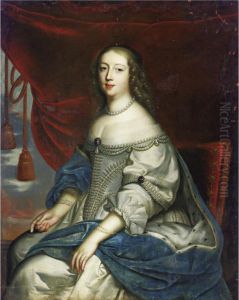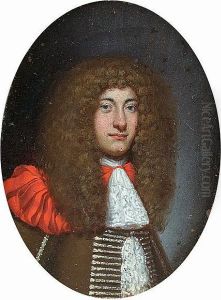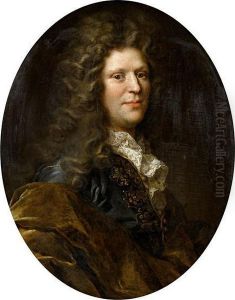Louis, Ferdinand Ii Elle Paintings
Louis Ferdinand Elle II was a French painter born in 1612, into an era where art was undergoing significant transitions, with the Baroque style beginning to take prominence across Europe. He was part of a notable lineage of artists, being the son of Ferdinand Elle the Elder, who was also a distinguished painter. This familial background provided him with an environment rich in artistic tradition and exposure from a young age, setting the stage for his development as an artist.
Elle II's career is marked by his contributions to portrait painting, a genre that was gaining immense popularity in France during the 17th century. His works are known for their elegance, attention to detail, and the skillful capture of his subjects' character and status. He became particularly favored among the French nobility and the burgeoning bourgeoisie, who were eager to commission portraits as a means of asserting their social positions and wealth. Through his portraits, Elle II not only depicted the physical attributes of his sitters but also embedded subtle cues about their lives, interests, and statuses, making his paintings rich in narrative depth.
Despite the shadow cast by his father's reputation, Louis Ferdinand Elle II carved out his distinct identity in the French art scene. He was an active member of the artistic community in Paris and engaged with the evolving tastes and styles of the period. His adaptation to the preferences of his clientele and his ability to infuse traditional techniques with a sense of individuality and modernity helped sustain his career over several decades.
Elle II's contribution to French art was not limited to his paintings; he also played a role in the development of the artistic institutions in France, contributing to the early stages of what would later become the Royal Academy of Painting and Sculpture. His legacy, however, is most palpably felt through his portraits, which continue to be celebrated for their craftsmanship and historical value, offering insights into the personalities and cultural context of 17th-century France.
Louis Ferdinand Elle II died in 1689, leaving behind a body of work that remains of interest to art historians and collectors. His paintings are preserved in various museums and collections worldwide, serving as a testament to his skill and the enduring appeal of portrait painting in European art history. Through his contributions, Elle II not only sustained the artistic heritage of his family but also enriched the French Baroque tradition, bridging the gap between the Renaissance influences of his father’s generation and the evolving artistic expressions of his time.


